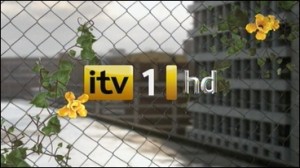
I’m a bit of a broadcasting geek. Beyond my love of code and web, you’ll find me happily reading all about broadcasting technology, bitrates and polarisation.
I joined the HD revolution in April 2010, the day Freeview HD launched from the Mendip transmitter, but something has always bothered me. All the existing channels were straight simulcasts of their non-HD origin but at a higher resolution, including enlarged OSD’s, so the downscaled SD feeds are still perfectly legible. This is the cheapest way to go HD. You only need to care about the downscaling for your SD feeds, which is something that can be done at playout (The place where your final composed feed gets made and is actually sent out to broadcast – ITV use technicolor and BBC use Red-Bee Media for this)
To many, that may well be what they think HD is and the vast majority of my friends “can’t see the point” in getting excited over HD content or services, let alone paying the premium for the hardware to watch it.
I’ve always been able to know HD content from SD, to the point where watching SD content bothers me – My usual routine when channel surfing is to switch to the “HD channels” tab of the Sky EPG and find something else to do if I can’t find anything on there.
Today, ITV changed something in their HD playout, at least for their Euro 2012 coverage: They switched to native on-screen display graphics, and what a difference that makes.
Now, if you’ve got Sky and watch Sky News HD at all, you’ll know exactly what I mean here. It’s where your HD feed uses graphics native for display on HDTVs – the end result to a viewer is much crisper, smaller graphics – It’s a bit like going to a high-DPI screen on a mobile device.
Sky did this from Day 1 on their Sky News HD channel, but it was their demonstration piece of their new broadcasting infrastructure. The rather wonderful Simon Stirrat, one of my twitter followers who is a Broadcast Support Engineer informed me Sky went to extreme lengths to build their HD workflows, including the creation of whole new buildings to support it. It requires 2 completely different streams to produce a native OSD graphics and a rather large amount of bandwidth – a single pre-transmission compression HD feed is at 1080i50 is about 1.5gb/s.
I’m looking forward to being able to demonstrate to the folks who say “I don’t see the point to HD” the difference, but for me it’s like upgrading to HD all over again, hence the childlike excitement.
Here’s hoping the BBC can join in soon and provide the native OSDs on their channels, because it’s a simply beautiful future.
Leave a Reply
You must be logged in to post a comment.